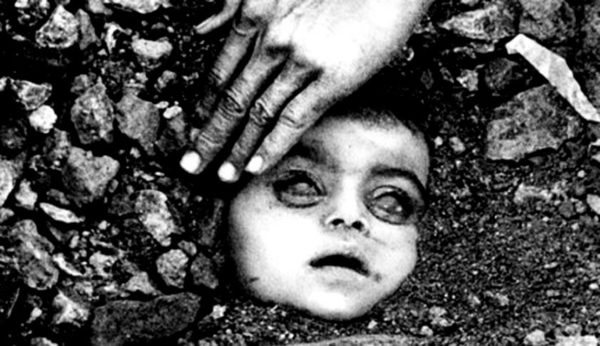Bhopal gas tragedy: What had happened this day 33 years ago?
Bhopal is known for its historical records, artificial lakes and greenery but most of all, the city is remembered across the globe for the worst industrial mishap of the world.
Post-midnight on December 3, 1984 – three days after assassination of the then Prime Minister Indira Gandhi, poisonous gas that leaked from the factory of Union Carbide in Madhya Pradesh capital Bhopal killed thousands of people directly. The incident is now known as the Bhopal disaster or Bhopal gas tragedy.
As per official records, the Bhopal gas tragedy killed 3,787 people. The figures were updated by the Madhya Pradesh government later as the immediate official estimate had put the death toll due to gas leak from Union Carbide factory at 2,259.
However, activists fighting for justice for Bhopal gas tragedy victims put the figures of death between 8,000 and 10,000. In an affidavit, submitted in 2006, the government said that the Bhopal gas leak caused 5,58,125 injuries that included approximately 3,900 severely and permanently disabling injuries.
How Did It Happen?
The fuel leak within the Union Carbide (now often known as Dow Chemical substances) was reported after midnight on the intervening night time of December 2 and three. The incident had taken place on the Plant Quantity C of the Union Carbide manufacturing facility in Bhopal.
Because the cool morning breeze picked up tempo, it carried the toxic fuel leaking from the Union Carbide manufacturing facility to remainder of the town and killing folks – each awake and asleep. As per authorities’s affidavit, about three,000 folks died of toxic fuel inside just a few hours of the incident.
It’s estimated that about 40 tonnes of methyl isocyanate (MIC) fuel and different chemical compounds leaked from the Union Carbide manufacturing facility. Methyl isocyanate is extraordinarily poisonous and if its focus in air touches 21ppm (elements per million), it may trigger demise inside minutes of inhaling the fuel. In Bhopal, the extent was a number of occasions larger.
Post Leakage Scene:
Bhopal had a inhabitants of about eight.5 lakh again in 1984 and greater than half of its inhabitants was coughing, complaining of itching in eyes, pores and skin and dealing with respiratory issues. The fuel triggered inner hemorrhage, pneumonia and demise. The villages and slums within the neighbouring areas of the manufacturing facility had been the worst affected.
The alarm system of the Union Carbide didn’t work for hours. No alarm was raised by the manufacturing facility managers. All of the sudden hundreds of individuals began working to hospitals on the morning of December three with their complaints.
In contrast to in the present day, Bhopal of 1984 didn’t have too many hospitals. Two authorities hospitals couldn’t have accommodated half of the inhabitants of the town. Folks had been struggling, discovering it troublesome to breathe and confused. So had been medical doctors, who didn’t instantly know the explanations for the sudden sickness that stricken each new dashing affected person.
The alarm system of the Union Carbide did not work for hours. No alarm was raised by the factory managers. Suddenly thousands of people started running to hospitals on the morning of December 3 with their complaints.
Unlike today, Bhopal of 1984 did not have too many hospitals. Two government hospitals could not have accommodated half of the population of the city. People were suffering, finding it difficult to breathe and confused. So were doctors, who did not immediately know the reasons for the sudden illness that afflicted every new rushing patient.
Patients complained of dizziness, breathlessness, skin irritation and rashes, some others reported sudden blindness. Doctors of Bhopal had never faced a situation like this. They had no experience in dealing with industrial disaster.
Symptoms of methyl isocyanate exposure were not immediately known to them. And, the two hospitals reportedly treated around 50,000 patients in first two days of the Bhopal gas leak. Officially, the government declared that the gas leakage was contained in eight hours, but the city has is still finding it difficult to come out of its grip even 33 years later.




Leave a reply